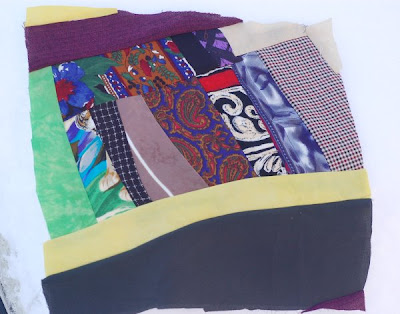Instead of New Year's Resolutions, I have more modest expectations--call them New Year's Plans, or Projects. One year, I decided to spend one hour each day dealing with clutter. At that time, I had quite a mess--Important Papers from former jobs, a dissertation's worth of books and reprints, and many, many boxes left over from clearing out my family's farm house. This last batch of stuff included boxes my mother had cleared out of her mother's family farm house in 1963, and stuck, unopened, in a closet. It was an overwhelming tangle, but because I could quit after an hour, I worked through it, day after day. I can't remember if I logged a full 365 hours or not, but by the end of the year, rooms and closets had appeared where there had only been piles of cardboard boxes before. In the process, I sold a bunch of stuff on eBay for cold cash. It was very rewarding, in several ways.
Last year, I planned to "do more" with my blog. It was not the best-defined project, but I "did more"--I posted 323 entries, substantially more than my 147 posts for 2005. I got more interested local flora and fauna, and began compiling "mini-guides" to accompany my photographs. I also watched which posts got most page-views, and found that Google most often served up my knitting and sewing "how-to's," recipes, and link compilations.
The best part of "blogging more" has been an increase in the number of regular readers who comment or e-mail. If any of you have read this far into a rather self-absorbed post, thanks so much for reading and coming back!
For my 2008 New Year's Projects and Vague Aspirations, I've joined Sharon B's Take It Further Challenge, where I hope her monthly project prompts will push me to try new fiber arts techniques and styles. I have several ideas for January's prompt, Ask yourself who do you look up to and admire? Why? What is it you admire about them?. For several years, I've been playing with the idea of photographic images on fabric, and this looks like a good topic to push me in that direction.
I also intend to "do still more" with my blog and my neglected Web site. Vague has been working for me so far, so I'll continue with it. I've got some "health and welfare" resolutions as well, but I like to handle these on a month-by-month basis, so if something isn't working, I can revise and start over.

















